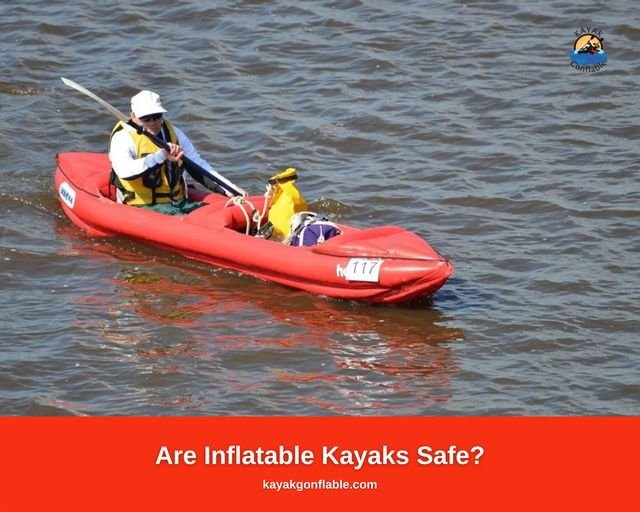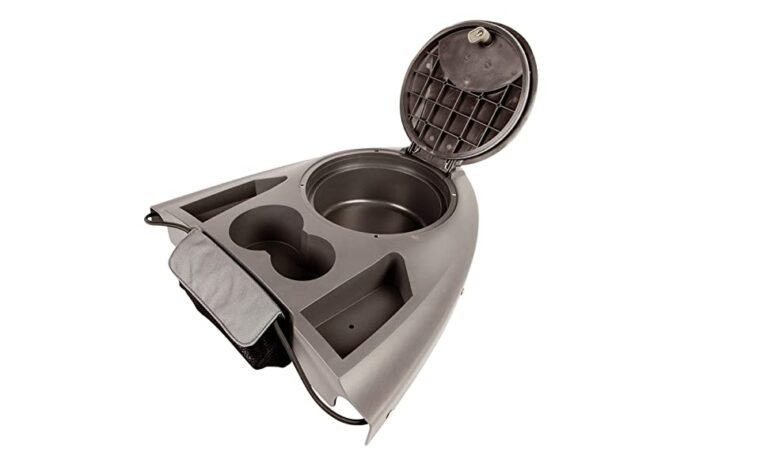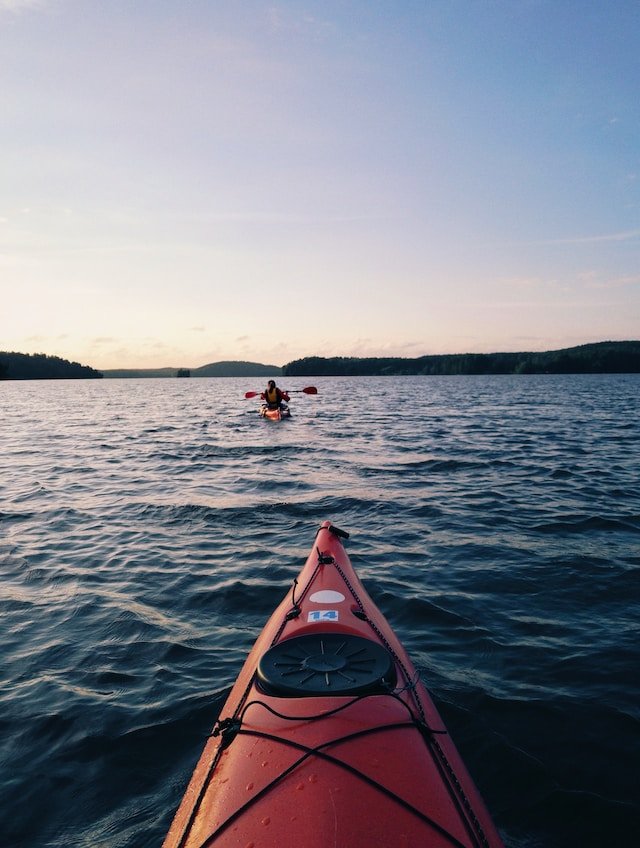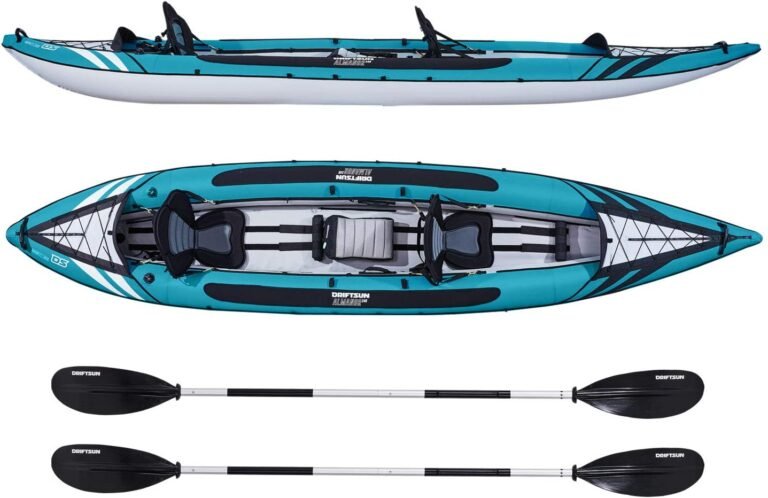I kayak gonfiabili sono sicuri?

Quanto sono sicuri i kayak gonfiabili?
Ogni volta che sentiamo dire che qualcosa è gonfiabile, quello che ci viene in mente è che è morbido, gonfiabile e facile da far scoppiare. Eppure abbiamo kayak gonfiabili.
La prima volta che ne ho sentito parlare kayak gonfiabili, la prima cosa che mi è venuta in mente è stata "Sicuramente non può essere sicuro". Molte persone hanno preoccupazioni simili riguardo alla sicurezza di un kayak gonfiabile e se può funzionare bene come un kayak a guscio rigido.
Se anche tu hai sperimentato questo, sei nel posto giusto perché questo articolo metterà fine ai malintesi in merito kayak gonfiabili.
Cos'è un kayak gonfiabile?
Simply, an kayak gonfiabile is a kayak that needs to be pumped up with air. If you want a more advanced definition then it’s a multi-layered PVC (polyvinyl chloride) boat with meticulously built air chambers to give buoyancy and allow them to float on water.
Può avere altre caratteristiche e accessori che non sono gonfiabili, come i sedili o il poggiapiedi, ma finché deve essere gonfiato è un kayak gonfiabile. Esistono diversi tipi di gonfiabili kayak realizzati per soddisfare le vostre esigenze e preferenze personali in termini di stile di imbottitura.
Un kayak autosvuotante è costruito per condizioni di acqua che scorre veloce. Ha anche la caratteristica aggiuntiva di avere fori di drenaggio per evitare che il kayak venga allagato dall'acqua. Tuttavia, ciò significa che dovresti aspettarti che il tuo sedile si bagni.
Un kayak sit-in con un baricentro basso offre grande stabilità ed è molto simile nel design al kayak a guscio rigido. Come un kayak a guscio rigido, il kayak sit-in ha una cabina di pilotaggio in cui puoi sederti.
Ha spazio nello scafo per riporre attrezzature e rifornimenti e ha l'ulteriore vantaggio di essere più caldo quando fa freddo.
Un kayak sit-on è perfetto per i kayakisti e i bambini inesperti poiché è molto facile da usare e padroneggiare. Il suo ponte è considerevolmente grande e aperto.
Questo tipo di kayak gonfiabile è chiamato sit-on perché invece di avere le gambe racchiuse in una cabina di pilotaggio come nei normali kayak sit-in, ti siedi sopra questi kayak.
Tandem kayak sono per i canoisti che amano remare in compagnia. Sono kayak per 2 persone perfetti per le coppie che cercano un po' di tempo da soli con la natura o per gli amici che cercano la loro prossima avventura.
Sono progettati con due sedili con la caratteristica aggiuntiva di una lunghezza extra che rende il kayak più stabile.
Vantaggi di un kayak gonfiabile
Oltre al vantaggio principale di un kayak gonfiabile che è più economico di un kayak a guscio rigido, ci sono molti altri vantaggi di cui potrai godere quando ne usi uno.
Portabilità: Uno dei maggiori vantaggi che un kayak gonfiabile ha rispetto a un kayak a guscio rigido è il fatto che è facilissimo da trasportare e da spostare.
Un kayak gonfiabile è generalmente molto più leggero di un kayak a guscio rigido e una volta sgonfiati tutti i suoi scomparti, possono essere arrotolati e piegati saldamente in una borsa da trasporto che puoi portare ovunque tu vada.
Ciò lo rende l'opzione perfetta quando si è in vacanza in luoghi dove potrebbe essere difficile noleggiare kayak poiché i kayak gonfiabili possono essere spediti o portati con sé come semplice bagaglio.
Il fatto che possa anche essere conservato all'interno di una borsa per il trasporto, lo rende molto più facile da riporre, il che significa che puoi semplicemente gettarlo in un armadietto o nel seminterrato ogni volta che non è in uso.
Stabilità e rigidità: Il kayak gonfiabile è incredibilmente stabile, resistente e rigido, ma assicurati che sia ben gonfiato prima dell'uso. In caso contrario, potresti avere difficoltà a rimanere a galla nel kayak.
Per garantire che rimangano estremamente stabili in acqua, la maggior parte dei kayak gonfiabili sono progettati con una struttura metallica o con sottili segmenti gonfiati che funzionano come aste. Entrambi svolgono la stessa funzione degli stabilizzatori nel kayak.
Tuttavia, se prevedi di utilizzare un kayak gonfiabile sull'oceano o per il kayak in acque bianche, è consigliabile utilizzare i kayak progettati per questo scopo specifico.
Durabilità: Come accennato in precedenza, un kayak gonfiabile è costituito da diversi strati di PVC che lo rendono molto resistente. Il PVC utilizzato nella realizzazione di questi kayak è solitamente rivestito che li rende molto resistenti.
Alcuni kayak sono stati costruiti con materiali ancora più resistenti, come l'Hypalon, che li farà durare più a lungo di un kayak gonfiabile in PVC.
La maggior parte dei kayak gonfiabili dura in media dai 7 ai 10 anni, e questa durata può anche raddoppiare fino a 20 anni se il kayak riceve la cura e la manutenzione adeguate.
Quindi, se vuoi davvero il meglio dal tuo kayak, devi prendertene cura.
Galleggiabilità intrinseca: Una delle cose migliori di un kayak gonfiabile è il fatto che, grazie alle sue molteplici camere piene d'aria, sono incredibilmente galleggianti. Ciò significa che qualunque cosa accada, non affonderanno.
Anche quando si riempiono d'acqua, sono così galleggianti che rimarranno a galla e, poiché la maggior parte dei kayak gonfiabili si auto-svuotano, l'acqua si scaricherà immediatamente.
E grazie al loro design più ampio, sono incredibilmente difficili da capovolgere. I kayak gonfiabili hanno anche una maggiore capacità di carico, rendendoli perfetti per la pesca.
Adatto ai principianti: Non solo un kayak gonfiabile è perfetto per i bambini, ma è anche il punto di riferimento kayak per principianti o kayakisti inesperti.
Se non hai esperienza, un kayak gonfiabile sarebbe un ottimo punto di partenza. Oltre al fatto che è leggero, molto stabile, durevole e non affonderà, non devi spendere una fortuna per acquistarne uno.
Voglio dire... cosa c'è da non amare.
I kayak gonfiabili sono sicuri?
Una delle maggiori preoccupazioni che le persone hanno riguardo all'utilizzo di un file il kayak gonfiabile è se scoppierà o forare mentre si è in acqua, ma questo è un enorme malinteso.
Come accennato in precedenza, i kayak gonfiabili sono realizzati con materiali incredibilmente resistenti e resistenti come PVC e Hypalon.
Questi materiali vengono quindi stratificati e dotati di un rivestimento protettivo esterno UV e rinforzi resistenti all'abrasione. Tutti questi fattori lavorano insieme per garantire che il kayak sia il più a prova di foratura possibile e possa sopportare un'ampia varietà di abusi.
Guarda il video qui sotto per vedere quanta pressione può sopportare un kayak gonfiabile
Anche se i kayak gonfiabili sono stati progettati per essere altamente resistenti alle forature, possono comunque verificarsi perdite e strappi.
Non c'è davvero modo di sapere che tipo di roccia o oggetti appuntiti incontrerà il kayak mentre è in acqua.
Quindi, se sei in acqua e ti capita di trovare uno strappo sul pavimento del kayak, niente panico perché il kayak è stato progettato pensando a queste situazioni.
I kayak gonfiabili hanno almeno tre camere d'aria, quindi nel caso in cui una venga forata, le altre camere d'aria saranno in grado di funzionare finché non sarai in grado di remare per atterrare.
Ricorda, anche se è possibile che un kayak gonfiabile venga forato, c'è una possibilità molto remota che ciò accada.
Tuttavia, non preoccuparti se ti ritrovi con un kayak forato, la buona notizia è che le forature sono una soluzione semplice. Non è necessario ricorrere a un team di specialisti professionisti per riparare il buco.
Con l'aiuto di un kit di toppe potrete riparare il kayak in pochissimo tempo. Per una guida su come eseguire questa operazione, guarda il video qui sotto
Categorie di kayak gonfiabili
Sebbene i kayak gonfiabili siano stati progettati e costruiti in modo tale da mettere al primo posto la sicurezza di chi li utilizza, è anche importante che venga utilizzato il kayak corretto per le attività appropriate.
Esistono tre diverse categorie di kayak gonfiabili, ciascuna costruita in modo speciale per funzionare in scenari e condizioni dell'acqua specifici.
Categoria 1 i kayak gonfiabili sono costruiti con un solo strato di PVC. Questo tipo di kayak è preferibile per chi ha un budget limitato e cerca qualcosa di economico che in genere varia tra $80 e $250. Sono ottimi per acque calme e pagaie corte, anche se sono noti per essere lenti e difficili da controllare e manovrare.
Kayak gonfiabili di categoria 2 sono più costosi e costano tra $350 e $800. Sebbene, come i kayak di categoria 1, abbiano un solo strato di PVC, hanno anche la caratteristica aggiuntiva di avere il PVC racchiuso in un tessuto protettivo che li rende più resistenti alle forature e ai raggi UV. I kayak di categoria 2 sono ottimi anche per il kayak in acque bianche.
Kayak gonfiabili di categoria 3 sono quelli che vedi utilizzati da kayakisti esperti e impegnati o da coloro a cui non importa il loro costo più elevato.
Tuttavia, con il costo più elevato si riduce la possibilità che il kayak venga forato. Ciò è dovuto alla tecnologia Drop Stitch di cui sono dotati, che lo rende quasi paragonabile a un kayak a guscio rigido.
I kayak di categoria 3 sono anche più veloci, robusti e rigidi rispetto ad altri kayak gonfiabili.
Suggerimenti per l'utilizzo di un kayak gonfiabile
Ora che tutti i dubbi sono stati chiariti ed è stato stabilito che i kayak gonfiabili sono sicuri da usare, ecco alcuni consigli e indicazioni per aiutarti a ottenere il massimo dal tuo kayak:
Manutenzione: Although an inflatable kayak is very durable, it still needs to be properly maintained for it to last as long as possible. One way or maintaining the UV protective layer on the skin of the kayak is to apply UV protectant spray.
La pulizia regolare delle valvole previene l'accumulo di sabbia che potrebbe intasare la valvola durante il gonfiaggio, provocandone potenzialmente l'esplosione.
Quando si gonfia il kayak, è necessario prestare attenzione alla pressione dell'aria. Assicurarsi che il kayak gonfiabile non sia gonfiato troppo o troppo poco.
Un kayak troppo pompato causerà danni alle cuciture, mentre un kayak sotto gonfiato subirà perdite di rigidità e velocità. Controllare il manuale del proprietario e seguire le linee guida fornite.
Quando fa caldo, ricordarsi di far uscire un po' d'aria dal kayak per evitare un aumento della pressione dell'aria nel kayak.
Essiccazione: Dopo una giornata trascorsa a remare è importante che il kayak sia adeguatamente riposto per evitare danni. È importante pulire, sciacquare e asciugare il kayak prima di riporlo in una borsa per il trasporto.
Pulizia il kayak di sporco e detriti impedisce che la superficie del kayak venga sbrigliata, rimuovendo lo strato protettivo e aumentando le possibilità di foratura.
Il risciacquo del kayak rimuove eventuali residui e detriti che potresti aver perso. Il risciacquo previene anche l'erosione dovuta al sale o ad altre sostanze chimiche che potrebbero essere presenti nell'acqua in cui ti trovi.
Dopo il risciacquo il kayak deve essere adeguatamente asciugato. In caso contrario, i materiali umidi potrebbero favorire la crescita di muffe e funghi, che potrebbero degradare e assottigliare il PVC di cui è fatto il kayak.
Magazzinaggio: Il modo in cui viene riposto un kayak gonfiabile è fondamentale se vuoi che abbia una lunga durata. È importante che il kayak venga riposto sgonfio per proteggerne le cuciture e la pelle.
Aiuterà anche a ridurre la tensione sulle sue valvole. Una volta che il kayak è stato adeguatamente sgonfiato, è necessario arrotolarlo o piegarlo. Non importa quale scegli di fare, assicurati solo di farlo in modo leggermente diverso ogni volta.
In caso contrario, potrebbero formarsi delle cuciture sulla pelle del kayak, rendendo il materiale più debole in questi punti e con maggiori probabilità di forarsi o strapparsi. Una volta che il kayak è stato piegato o arrotolato e riposto in una borsa da trasporto, per evitare la formazione di muffe o funghi, è necessario conservarlo in un luogo fresco e asciutto.
Se preferisci tenerlo all'aperto, coprilo per evitare che umidità e detriti si depositino sulla pelle. Sebbene tutto abbia i suoi rischi, spero di essere riuscito a dimostrarti che i kayak gonfiabili sono molto resistenti, sicuri e affidabili.
Non solo sono portatili, leggeri e adatti ai principianti, sono anche molto resistenti e più economici di un kayak rigido. Fidati di me e prova a procurarti un kayak gonfiabile per la tua prossima avventura in canoa, non te ne pentirai.






